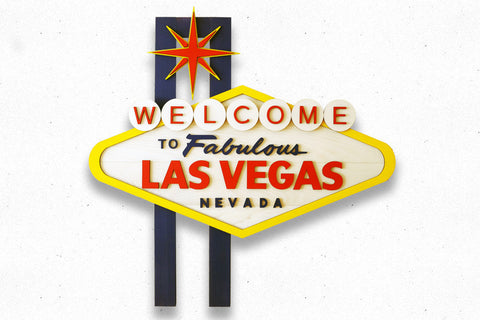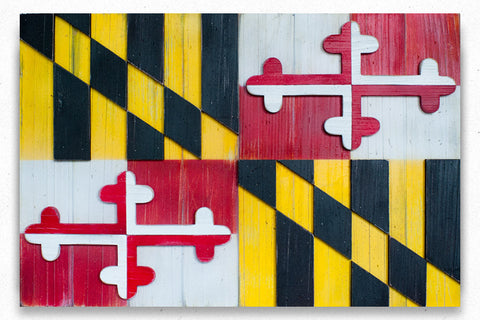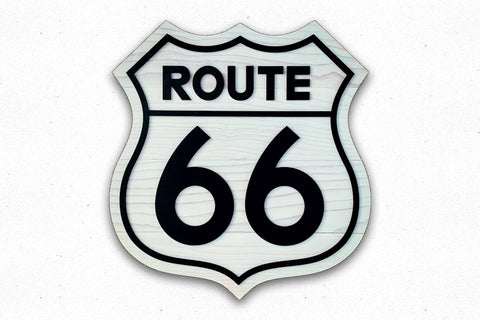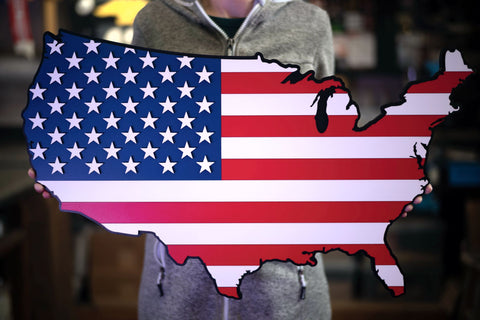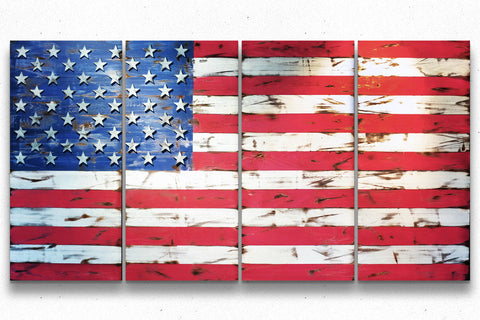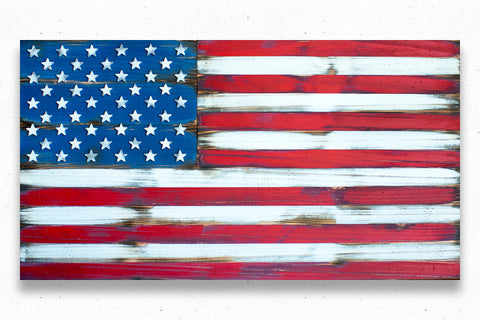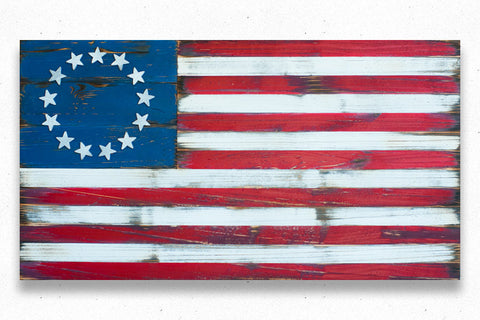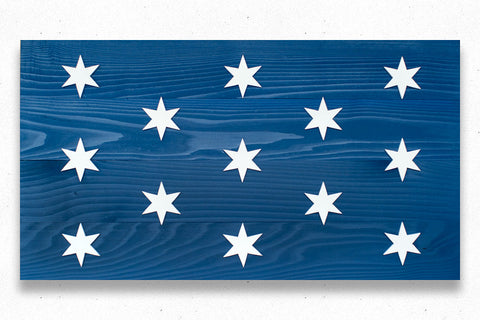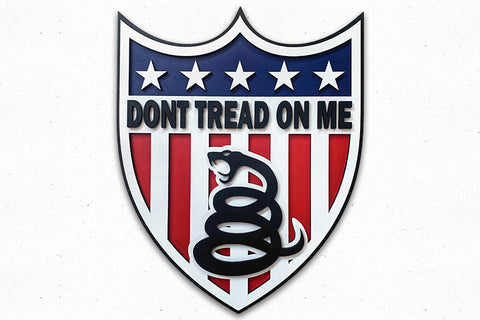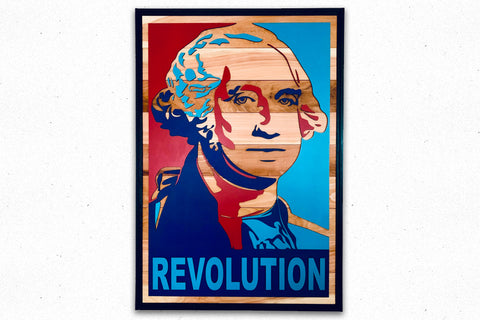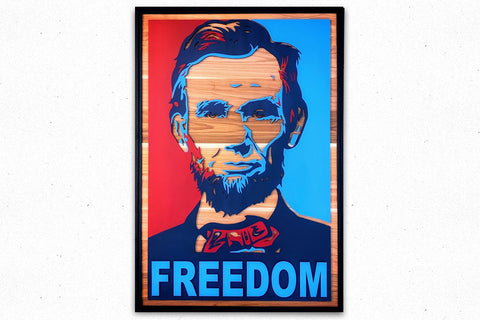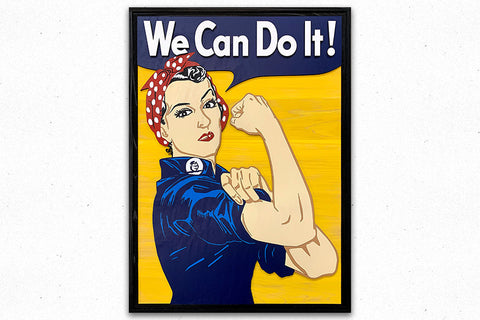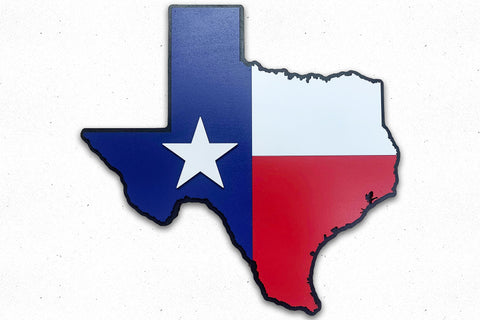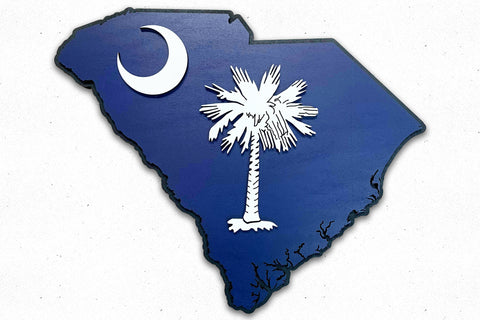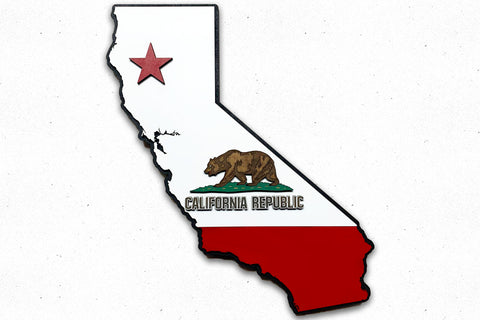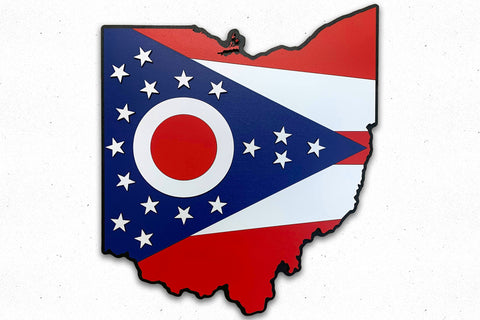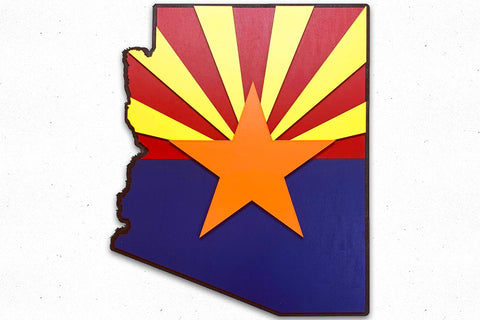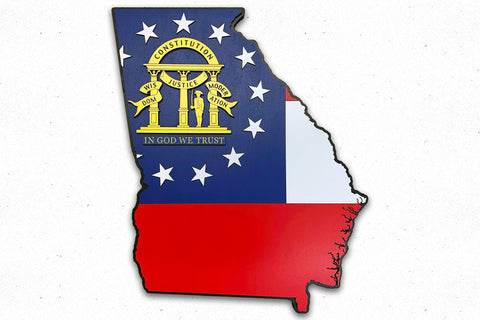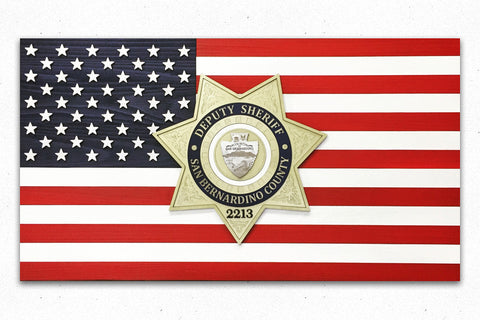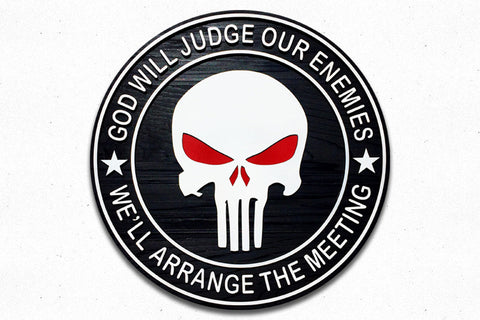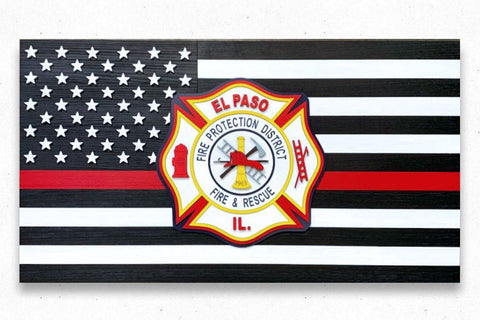The Fort Sumter Flag is a historic American flag, best known for its role in the American Civil War. It was involved in the start, middle, and end of the war, and it was recognized as a strong Union symbol throughout.
A version of the Stars and Stripes, the Fort Sumter Flag’s design is nonetheless distinct: its 33 white stars are arranged in a unique diamond pattern. We recently added a wooden replica of this flag to Patriot Wood.com; head to the flag-details page to see more details of its design.
Continue reading to learn more about the Fort Sumter Flag’s involvement in the Civil War.

The Fort Sumter Flag flew over Fort Sumter—the Charleston, South Carolina sea fort best known as the site where the Civil War’s first shots were fired.
At the onset of the Civil War, Fort Sumter quickly became an area of conflict. The key fort was only partially garrisoned with Union soldiers, and its ammunition stores were poorly stocked. So when it was attacked by Confederate soldiers, it didn’t last long. For a few days, the two sides exchanged cannon fire. But the Union soldiers couldn't hold out: they were forced to surrender and evacuate the ill-equipped fort.
After surrendering, Major Robert Anderson was allowed to take the Fort Sumter Flag with him. He brought it to New York, where the next phase of the flag’s life began.
When Major Anderson reached New York City, he displayed the Fort Sumter Flag as part of a patriotic rally. More than 100,000 people attended the rally, which is considered the largest US gathering at that time.
After the rally, the Fort Sumter Flag was brought from town to town with two clear purposes: one, to raise money for the war efforts, and two, to inspire patriotism in the American citizens.
It became a fundraising phenomenon. In each town, the flag was auctioned off to the highest bidder, then immediately donated back to the nation. This process was repeated many times. The Fort Sumter Flag went from rally to rally, raising money and becoming a renowned patriotic symbol for the North in the process.
After four long years, the Civil War was coming to a close. Major Anderson was now a major general, and the Union was celebrating its victory in the war that divided the nation. As part of these celebrations, Major General Anderson returned to the battered remnants of Fort Sumter with the Fort Sumter Flag. He raised the flag victory: it had come home.
At the flag raising ceremony, Reverend Henry Ward Beech gave the following speech:
On this solemn and joyful day, we again lift to the breeze our fathers’ flag, now, again, the banner of the United States, with the fervent prayer that God will crown it with honour, protect it from treason, and send it down to our children with all the blessings of civilization, liberty, and religion. Terrible in battle, may it be beneficent in peace! Happily no bird or beast of prey has been inscribed upon it. The stars that redeem the night from darkness, and the beams of red light that beautify the morning, have been united upon its folds. As long as the sun or the stars endure, may it wave over a nation neither enslaved nor enslaving . . .
In this solemn hour, let us pray for the quick coming of reconciliation and happiness under this common flag . . .
In the name of God we lift up our banner, and dedicate it to peace, union, and liberty, now and forever more. Amen.
The Fort Sumter Flag bookended the Civil War. Today, it stands as a solemn reminder of a tragic time in America’s history.
Unlike many historic flags, the Fort Sumter Flag is still available for display today. You can see the flag for yourself at the National Parks Service’s Fort Sumter Museum.
You can also get your own wooden replica of this historic flag from Patriot Wood. See details of Patriot Wood’s Fort Sumter Wood Flag now!
And don’t forget to sign up to get updates from Patriot Wood delivered to your inbox: you’ll receive exclusive offers and the best content delivered right to you. (As a way of saying thanks, you’ll also get a special thank-you code for 15% off your order!)



